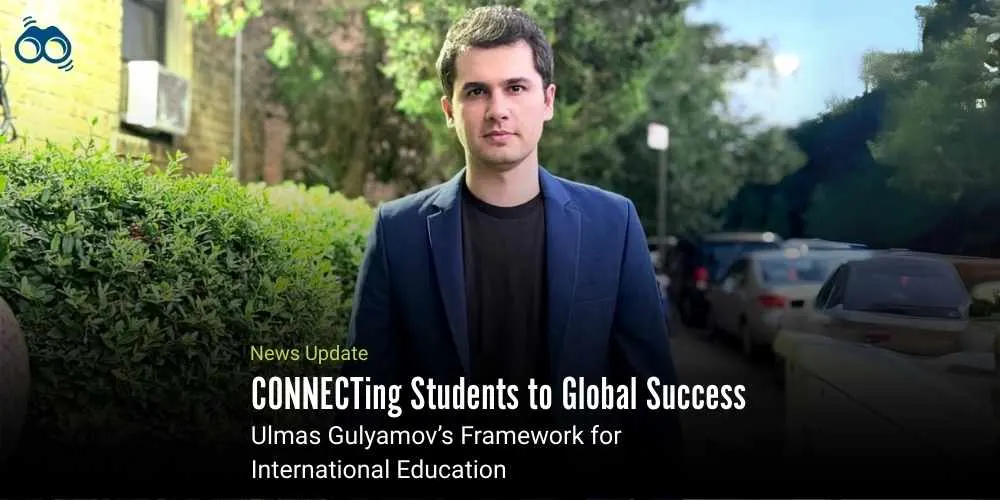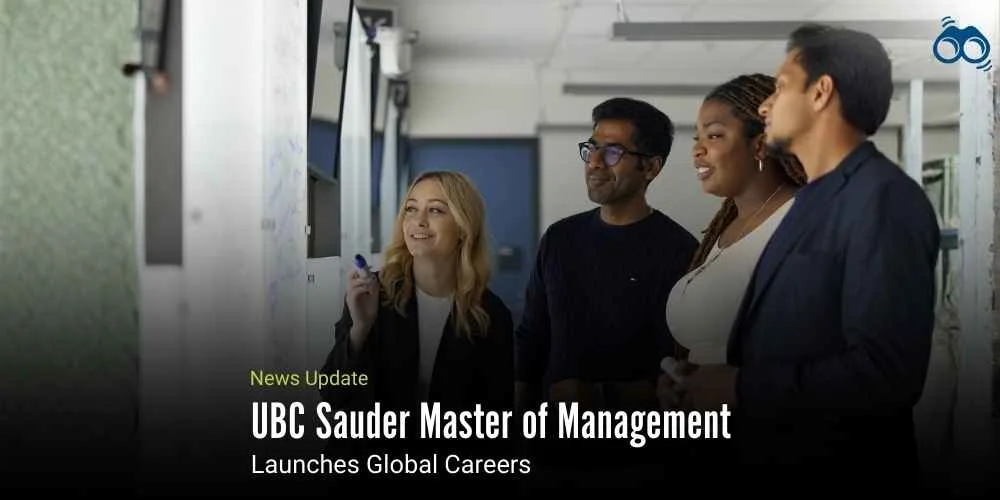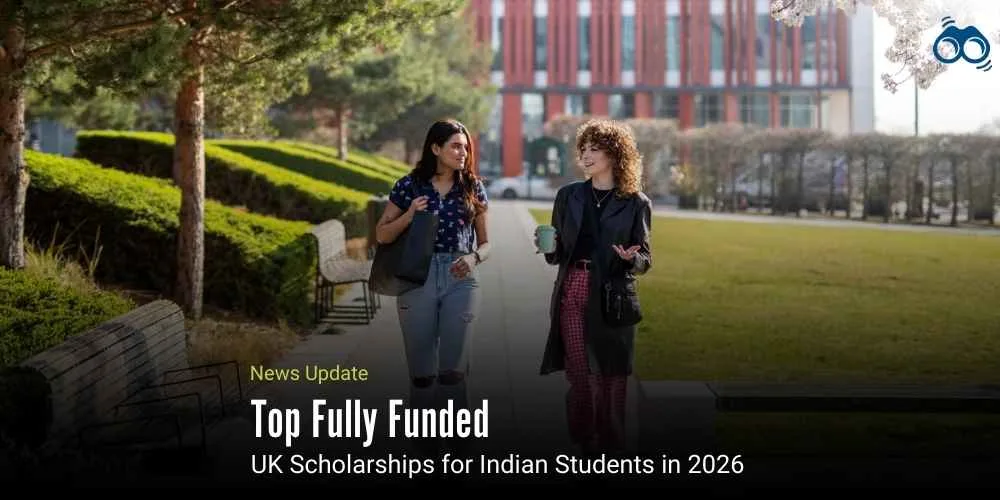Shaping Global Careers: Gulyamov’s Seven-Step Pathway for Students Abroad
Guiding Students Beyond Borders: The Impact of Ulmas Gulyamov’s CONNECT Methodology
In the fast-evolving sphere of global education, one central question continues to persist: how can educational institutions ensure that international students not only cross borders for academic opportunities but also thrive in unfamiliar environments and secure meaningful careers? This question has gained increasing relevance as higher education worldwide becomes more interconnected, and student mobility accelerates across continents. According to Ulmas Gulyamov, a recognised expert in international business education whose work has been featured in Aniq.uz and Mignews, the answer lies in a bold and structured approach, his original CONNECT methodology.
While international student numbers continue to rise, reports from UNESCO and the OECD reveal persistent disparities linked to visa policies, qualification recognition, and unequal access to scholarships. In this context, frameworks such as CONNECT are increasingly vital, not only for institutional guidance but also for informing policy, particularly in regions navigating post-pandemic recovery and geopolitical uncertainty.
Gulyamov’s work is rooted in a long-standing commitment to supporting students from Uzbekistan in their efforts to succeed while studying abroad. As Aniq.uz reported, he played a pivotal role in establishing academic pathways between Tashkent and Tokyo, particularly during a period of growing interest in international universities in Japan. Recognising the multifaceted challenges students faced, including language barriers, cross-cultural communication difficulties, and uncertainties around career prospects, he developed a system that extended well beyond conventional admissions consulting. His approach was designed not merely to facilitate entry into global universities but to ensure long-term integration and success.
This solution evolved into the CONNECT methodology, a seven-element framework now recognised by global universities and education agencies in Japan, the United States, Turkey, and other countries. According to Mignews, CONNECT stands for: Cultivate Trust, Optimise Pathways, Nurture Motivation, Network Strategically, Engage Continuously, Collaborate with Stakeholders, and Track & Transform. Each component addresses a critical stage in the student journey, from initial orientation to career integration, ensuring that the process remains personal, culturally sensitive, and results-oriented. CONNECT distinguishes itself from models such as NAFSA’s International Student Life Cycle and EAIE’s Inclusive Mobility Framework through its emphasis on early trust-building and sustained stakeholder collaboration. Unlike static, checklist-based approaches, CONNECT adapts flexibly to individual student needs, making it particularly effective in diverse and resource-constrained environments.
Over time, more than 200 students have reportedly benefited directly from Gulyamov’s mentorship. Many have gone on to secure positions in leading companies, integrate into professional communities abroad, or return to their home countries with advanced skills and global connections. One notable case, first covered by Aniq.uz, is that of Ismail Parmonov, who studied at Tokyo International University under Gulyamov’s guidance and later became a senior IT recruiter in a multinational firm. His trajectory exemplifies the kind of student success in global networks that CONNECT aims to foster.
Gulyamov’s commitment to global education extends beyond university-level learners. In a seminar held at Campus Midtown School, he introduced younger students to the fundamentals of international education and global career planning. The session reportedly included practical exercises based on the CONNECT framework, such as goal-setting, strategies for cross-cultural communication, and early professional networking. Teachers observed that students left the seminar with greater confidence in pursuing educational opportunities abroad, demonstrating that global competence can and should be cultivated from an early age.
He has consistently emphasised that the earlier students are equipped with essential skills, the better prepared they will be for future challenges. In his view, global education should begin not only after relocation but as part of foundational learning. This proactive approach ensures that students are not merely reacting to obstacles but are prepared to navigate them with resilience and clarity. Observers have noted that the CONNECT framework is not a generic checklist but a dynamic system tailored to each student’s cultural background, academic field, and career aspirations. For instance, Cultivate Trust begins before admission, through transparent communication and the setting of realistic expectations, allowing students to express their fears, ambitions, and limitations. Optimise Pathways focuses on aligning academic and extracurricular choices with long-term career goals, helping students avoid misaligned decisions. Nurture Motivation relies on structured mentorship and peer support to sustain engagement throughout the academic journey.
Network Strategically equips students to build professional connections both within the host country and internationally, ensuring they graduate with career opportunities already underway. Engage Continuously provides consistent and proactive support, rather than isolated interventions that often fail to address systemic challenges. Collaboration with Stakeholders brings together educators, parents, and community partners to reinforce student success. Finally, Track & Transform is designed to measure progress through academic performance, career readiness, and personal growth indicators, ensuring holistic development. Reports have highlighted that institutions in Japan have integrated CONNECT into their admissions and mentoring processes, while agencies in Turkey and Kazakhstan have adopted it for student orientation. In the United States, selected elements of the framework have been applied within career services and university partnership programmes.
According to Mignews, the results of the CONNECT framework include improved student satisfaction, lower dropout rates, and stronger career placements. These outcomes are supported by positive feedback from education professionals who regard CONNECT as a scalable model for enhancing global education outcomes. Early data reveal a 25% rise in student satisfaction, a 30% improvement in career placement, and a notable reduction in dropout rates, demonstrating its measurable impact. Looking ahead, Gulyamov plans to adapt CONNECT for refugee and marginalised student populations, aligning with the United Nations Sustainable Development Goal 4. With the integration of digital tools and AI-driven advising, the framework could be scaled to support diverse learners, including those in humanitarian or post-conflict settings.CONNECT offers a timely and transformative model for ensuring that international students not only access education but also flourish within global university systems.
Editor's Note:
A critical question arises in global education: how can institutions ensure international students not only gain admission but also flourish academically, socially, and professionally? This inquiry leads to Ulmas Gulyamov’s CONNECT methodology, a structured framework designed to support students from pre-admission through to career integration. International student mobility is growing, but many students face challenges like language barriers, cultural adjustment, and employment uncertainty, a global trend highlighted by UNESCO and OECD data. CONNECT, a system developed by Gulyamov based on his work bridging Uzbekistan and Japan, addresses these issues. Its seven-part framework, Cultivate Trust, Optimise Pathways, Nurture Motivation, Network Strategically, Engage Continuously, Collaborate with Stakeholders, and Track & Transform, supports students through key journey stages. CONNECT offers a flexible, personal, and long-term outcome-focused alternative to other global models. Ismail Parmonov's success after studying in Japan exemplifies CONNECT's effectiveness. The framework also benefits younger students, as seen at Campus Midtown School, where a seminar by Gulyamov boosted students' confidence in studying abroad by teaching goal setting, cross-cultural communication, and professional networking. CONNECT, used in Japan, Turkey, Kazakhstan, and the US, shows improved student satisfaction (25% rise), fewer dropouts, and better career placement (30% increase). Gulyamov aims to adapt it for refugees and marginalised students, aligning with UN SDG 4, and plans to integrate digital tools and AI for wider reach.
As per Skoobuzz, the CONNECT framework is more than a simple checklist; it's a comprehensive model that empowers institutions to guide students with a focus on inclusion, strategic planning, and a long-term perspective.














0 Comments (Please Login To Continue)